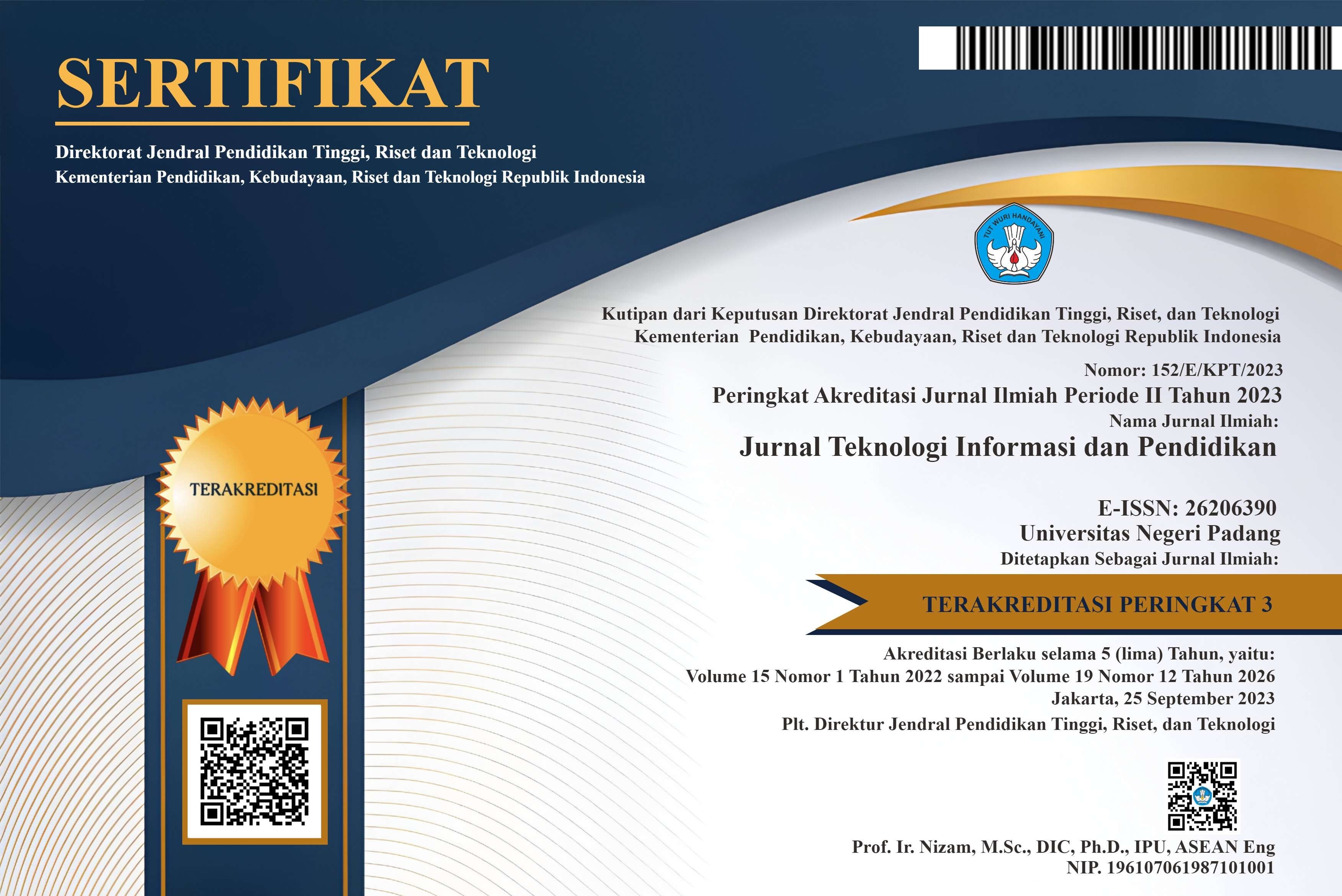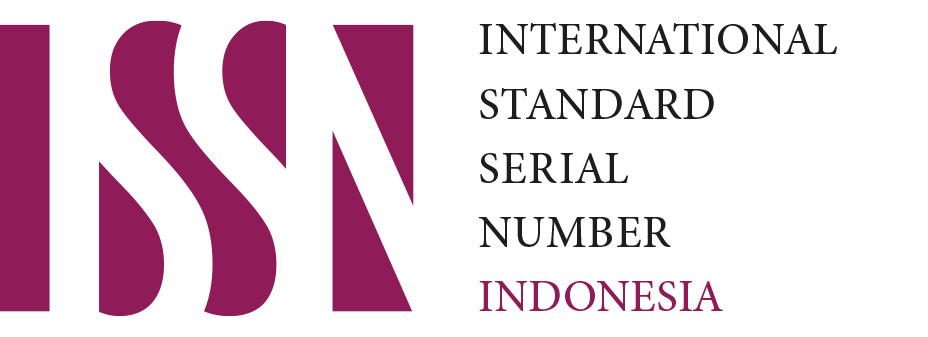Application of Quantum GIS in the Development of 3D Maps in the Tourism Bakunjangan Application
Abstract
This research explores the use of Quantum GIS (QGIS) in developing 3D maps for the Bakunjangan tourism application in Banjarmasin City. The integration of spatial data, sensors, and open data sources such as OpenStreetMap (OSM) aims to improve accuracy, consistency, and visitor experience. The development of 3D maps follows the System Development Life Cycle (SDLC) method, which outlines strategies and processes for developing, designing, and maintaining software projects, ensuring that all goals, objectives, functionalities, and user needs are met. The urgency of this research lies in its ability to support the Banjarmasin City government in managing and developing local tourism, especially with the increase in tourist visits from 2,487 in 2022 to 3,895 in 2023. The 3D map feature in the Bakunjangan Application is expected to provide accurate information and a more satisfying experience for tourists, as well as enhance the competitiveness of tourism at the national level. The development of the 3D maps was conducted after a survey of 55 Ground Control Points (GCP) in various tourist areas. The QGIS application, with the help of the Qgis2threejs plugin, facilitates the creation of 3D map animations, although five tourist attractions could not be animated. To optimally display the 3D maps, an internet connection with a minimum speed of 10 Mbps is required. As a result, the Bakunjangan Application produced 65 interactive user interfaces and 50 3D animations of tourist attractions, with an application feasibility rating of 89%, placing it in the excellent category.
References
R. Ulhaq and I. Juliwardi, “Birds Diversity Mapping using Quantum GIS For Ecotourism in The Mangrove Forest of Kuala Bubon, West Aceh,” Indonesian Journal of Computer Science, vol. 12, no. 5, Oct. 2023, doi: 10.33022/ijcs.v12i5.3421.
Muhammad Hidayat and S. Subandi, “Perancangan Aplikasi SIGAB pada Polresta Banjarmasin Berbasis Sistem Informasi Geografis Mobile Android,” Prosiding SISFOTEK, vol. 7, no. 1, pp. 97–101, Oct. 2023, [Online]. Available: https://seminar.iaii.or.id/index.php/SISFOTEK/article/view/385
L. Chandrakanthamma, S. Sivakumar, V. A. Sushma, and S. Karunamoorthy, “Metro Route Selection Using Quantum GIS,” in Recent Advances in Civil Engineering, K. R. Reddy, P. T. Ravichandran, R. Ayothiraman, and A. Joseph, Eds., Singapore: Springer Nature Singapore, 2024, pp. 93–102.
L. Chen, J. Li, M. Xu, and W. Xing, “Navigating urban complexity: The role of GIS in spatial planning and urban development,” Applied and Computational Engineering, vol. 65, no. 1, pp. 282–287, May 2024, doi: 10.54254/2755-2721/65/20240519.
M. Hidayat and D. Afriani, “Architectural Design Of Bakunjangan Tourism Application In Banjarmasin City Using Zachman Framework,” JURTEKSI (Jurnal Teknologi dan Sistem Informasi), vol. 9, no. 4, pp. 621–628, Sep. 2023, doi: 10.33330/jurteksi.v9i4.2501.
G. Boxer, “Using QGIS v3 in Mineral Exploration,” 2019.
S. Riyandi, A. Irsyad, F. Nurwahyu, and A. R. Nifansa, “Sistem Informasi Geografis Pemetaan Indomaret Di Kecamatan Tenggarong Berbasis Quantum GIS,” Pengabdian kepada Masyarakat Bidang Teknologi dan Sistem Informasi (PETISI), vol. 1, no. 2, pp. 65–68, Nov. 2023, doi: 10.30872/petisi.v1i2.1066.
J. Singh et al., “Enhancing Indoor Navigation in Intelligent Transportation Systems with 3D RIF and Quantum GIS,” Sustainability, vol. 15, no. 22, p. 15833, Nov. 2023, doi: 10.3390/su152215833.
S. Supriyana, L. Sunarjo, P. Prasko, and M. I. S. A. K. Aditya, “Mapping of dental caries incidence based on geographical information system (gis) in elementary school,” Odonto : Dental Journal, vol. 10, no. 2, p. 236, Dec. 2023, doi: 10.30659/odj.10.2.236-246.
A. D. Laksono, A. A. S. Habibi, D. T. Febiana, N. A. M. Bahri, S. Nisa’, and S. D. A. Febriani, “Pemetaan Potensi Energi Panas Bumi Pada Provinsi Sumatera Utara Berbasis Digital Melalui Quantum GIS,” Jurnal Engine: Energi, Manufaktur, dan Material, vol. 7, no. 1, p. 01, Feb. 2023, doi: 10.30588/jeemm.v7i1.969.
M. Buyukdemircioglu and S. Kocaman, “Reconstruction and Efficient Visualization of Heterogeneous 3D City Models,” Remote Sens (Basel), vol. 12, no. 13, p. 2128, Jul. 2020, doi: 10.3390/rs12132128.
M. Shen, “GIS positioning based on optical sensing detection and simulation of tourism route planning in rural tourism scenic areas,” Opt Quantum Electron, vol. 56, no. 3, p. 284, Mar. 2024, doi: 10.1007/s11082-023-06049-0.
M. Hidayat and D. Afriani, “Penerapan Metode Simple Additive Weighting (SAW) Sistem Informasi Geografis Aplikasi Bakunjangan Kota Banjarmasin,” Prosiding Seminar Nasional MIPATI, vol. 2, no. 1, Dec. 2023, [Online]. Available: https://mathdidactic.stkipbjm.ac.id/index.php/mipati/article/view/2550
R. Junarto and D. Djurjani, “Pemanfaatan Teknologi Unmanned Aerial Vehicle (UAV) untuk Pemetaan Kadaster,” BHUMI: Jurnal Agraria dan Pertanahan, vol. 6, no. 1, May 2020, doi: 10.31292/jb.v6i1.428.
D. Apriyanti, “Pembuatan Animasi Peta 3d Potensi Kawasan Wisata Jerebuu, Kabupaten Ngada, Flores, Nusa Tenggara Timur,” Jurnal Ilmiah Geomatika, vol. 2, no. 2, p. 26, Oct. 2022, doi: 10.31315/imagi.v2i2.7487.
M. Hidayat and N. Rahimah, “Perancangan Aplikasi Pengecekan Kerusakan Capacitor Discharge Ignition (CDI) Sepeda Motor Berbasis IOT,” Swabumi, vol. 12, no. 1, pp. 1–7, Mar. 2024, doi: 10.31294/swabumi.v12i1.16193.
A. Rozaq, R. K. Hardinto, A. Annurrahman, and D. Susanti, “Sistem Informasi Pembayaran Tambahan Penghasilan Berdasarkan Beban Kerja Pada Dinas Pendidikan Dan Kebudayaan Kabupaten Tanah Bumbu,” POSITIF : Jurnal Sistem dan Teknologi Informasi, vol. 4, no. 1, p. 1, Jul. 2018, doi: 10.31961/positif.v4i1.531.
R. Arora and N. Arora, “International Journal of Current Engineering and Technology Analysis of SDLC Models,” 2016. [Online]. Available: http://inpressco.com/category/ijcet
E. Jumiati, M. Aidjili, S. Wahyu Binabar, W. Darmawan, and I. Efendi, “Pengembangan Aplikasi Ensiklopedia Sebagai Media Informasi Penyakit Dan Tanaman Herbal Dengan Metode Sdlc,” RISTEK : Jurnal Riset, Inovasi dan Teknologi Kabupaten Batang, vol. 8, no. 1, pp. 01–06, Dec. 2023, doi: 10.55686/ristek.v8i1.152.
F. Azhari, F. Ramdani, and B. S. Prakoso, “Pengembangan Plugin QGIS untuk Menghitung Tingkat Kepadatan Bangunan,” Jurnal Pengembangan Teknologi Informasi dan Ilmu Komputer, vol. 6, no. 5, pp. 2256–2263, Apr. 2022, [Online]. Available: https://j-ptiik.ub.ac.id/index.php/j-ptiik/article/view/11024
Copyright (c) 2024 Jurnal Teknologi Informasi dan Pendidikan

This work is licensed under a Creative Commons Attribution-ShareAlike 4.0 International License.















.png)














